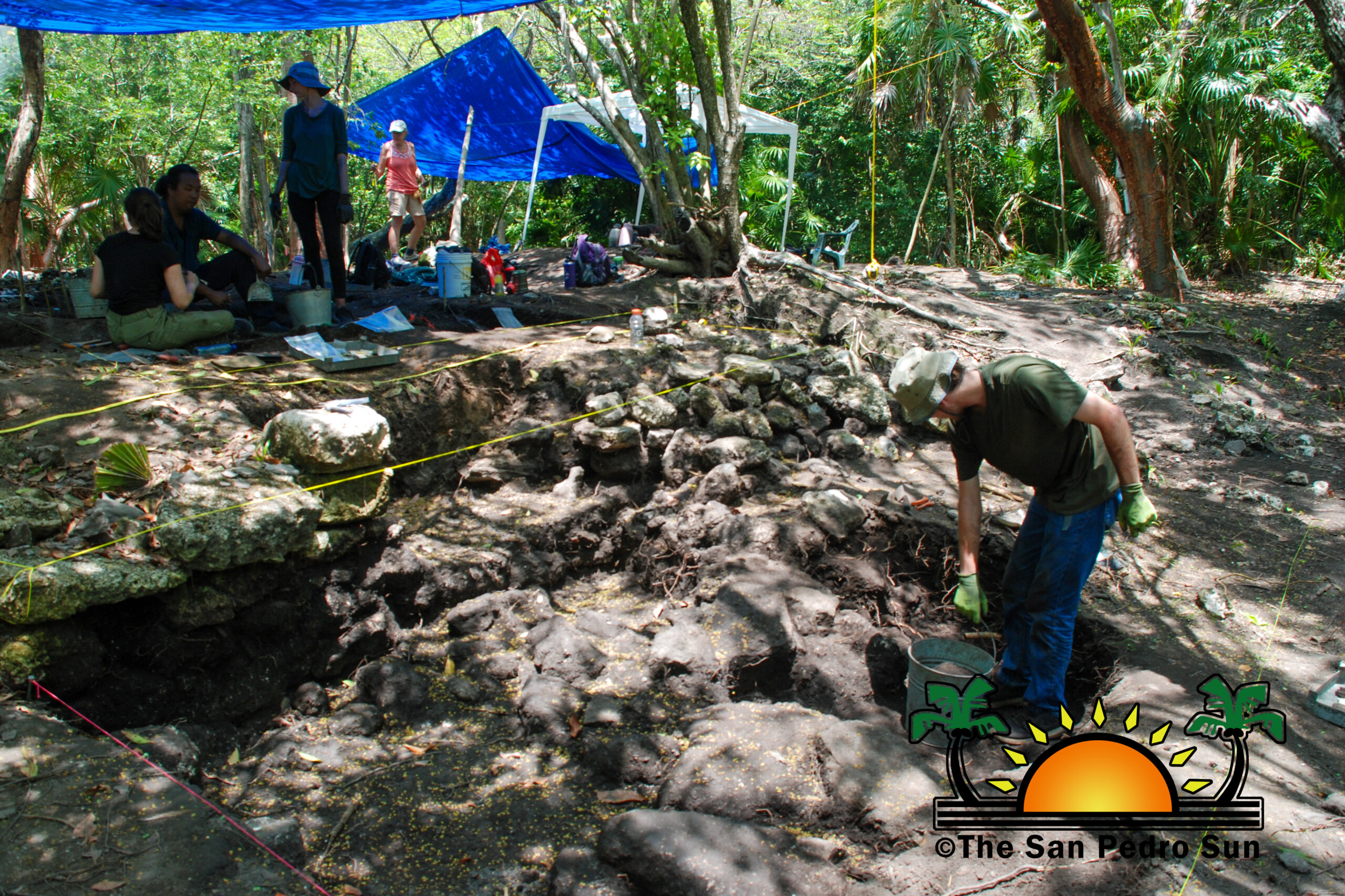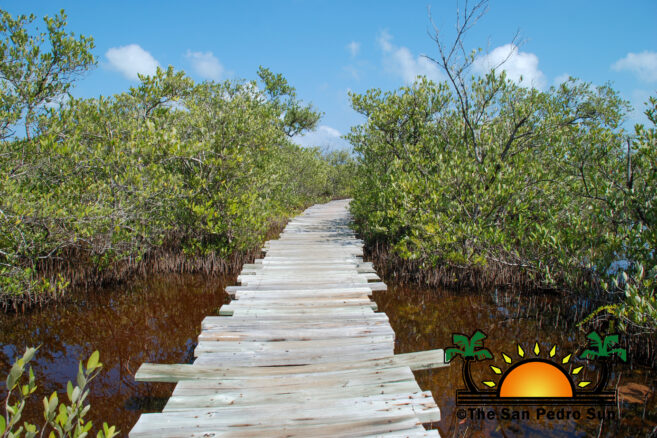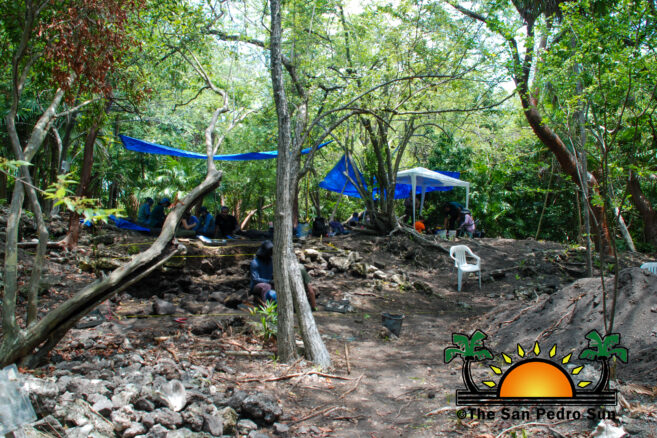After three years of neglect, the boardwalk leading to the Marco Gonzalez Archaeological Site, south of San Pedro Town, has been replaced with a stable and sturdy pathway. The much-needed refurbishment was made possible by the efforts of the archaeology field department at Michigan State University, under the direction of Dr. Gabriel Wrobel. He and a group of students from his university, including some from Belize, are currently conducting studies on the site to unveil further information about Marco Gonzalez’s ancient ruins.
Another professional overseeing the ongoing project is Dr. Elizabeth Graham, a long-time visitor to San Pedro who has led previous explorations/excavations at the island’s archaeological site. Graham is preparing to retire from the University College London and is here to pass on the Marco Gonzalez study project reins to Wrobel. The archaeology students are due to be working on the site until the end of the month.
Although the Marco Gonzalez was officially named an Archaeological Site back in 2011, it’s not operational, and remains closed due to a lack of funding from the Government of Belize. However, during this month, anyone interested in learning more about Marco Gonzalez can visit, and even participate in the excavation studies. Those interested can send a message to the Marco Gonzalez Facebook page https://www.facebook.com/marcogonzalezmayasite.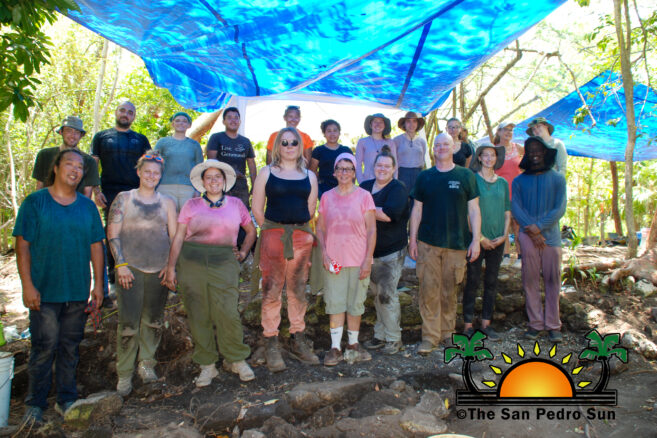
Wrobel and his team said they are happy to be on the island working on the site and contributing to the further unveiling new information and possible discoveries of the archaeological site. The area was considered an important Maya trade center on the island over 2,000 years ago. As such, Wrobel agrees that preserving Marco Gonzalez is imperative. The excited archaeologist and students are fascinated by the ruins, which are rich in history. Some of the Belizean students from Galen University and the
University of Belize expressed that every Belizean interested in archaeology should have this type of opportunity to learn more about their country’s history and people. They hope the government and its Ministry of Education will look into developing an Archaeology curriculum.
The findings at Marco Gonzales have unearthed a piece of Belizean history dating back to more than 2,000 years. Pottery fragments and artifacts dating back to around 100B.C. have been discovered. Marco Gonzalez is also believed to hold several burial sites, with human skeletons buried in interesting positions alongside bowls and even jewelry. These artifacts and skeletal remains remain unearthed and can possibly be looted. As such, it is imperative that funding be secured to implement proper management and protection for the area.
Dr. Graham became very interested in the site following her first visit to San Pedro in the mid-1970s. According to Graham, the site carries the name of an islander who showed it to them during their first visits to the island. Excavations began in 1986, and were directed by her and David Pendergast. This led to more study projects over the years of 1990, 2010 to 2012, and 2014. Graham said other excavations have occurred on the island, such as downtown San Pedro by Parham Plaza Hotel in front of Central Park. Another area they have explored includes Santa Cruz on the island’s leeward side. These excavations aimed to reveal the chronology of settlement and environmental change. However, she said Marco Gonzalez was like the community’s commercial hub.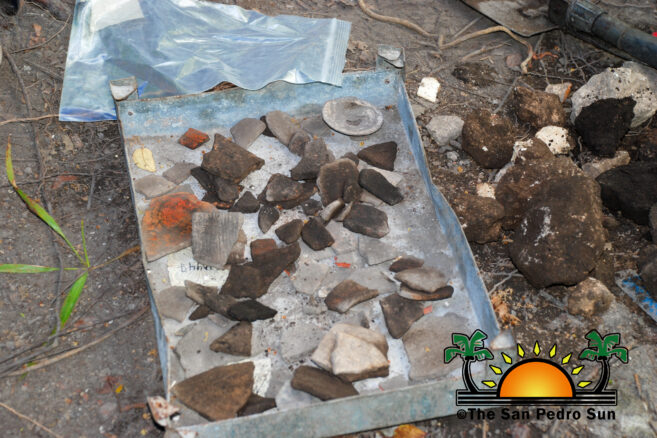
Marco Gonzalez is said to have seen a climax during the Protoclassic and Early Classic periods, around 1-250 A.D. The ancient site has also shown signs that it started to be utilized around the Preclassic period, sometime around 100 B.C. The settlement was speculated to be a trade center, concentrating on salt production. Archaeologists believe they exported salt to places like what is now the Bay Islands of Honduras and to the Yucatan peninsula and the gulf coasts of Campeche and Tabasco in Mexico. The archaeologists add to evidence of trading with mainland areas in Belize, such as the Lamanai site in the
northern Orange Walk District and as far as Mexico City with one of the most powerful civilizations known as the Aztecs.
To know more about the developments at Marco Gonzalez, visit https://www.lamanai.org.uk/ambergris-caye-sites.html.

